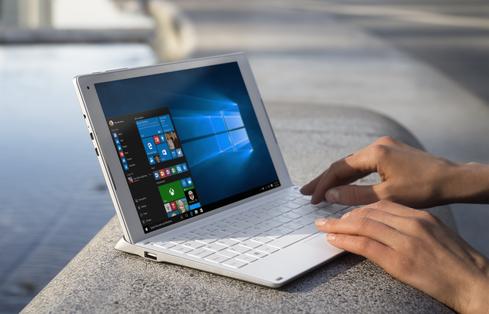Microsoft Publishes Windows 10 Roadmap, Targets Business PCsMicrosoft Publishes Windows 10 Roadmap, Targets Business PCs
Microsoft shared a roadmap of upcoming Windows 10 features for business PCs and delivered its first CBB build since the operating system launched in July 2015.

10 Windows 10 Hacks To Maximize Your Experience
10 Windows 10 Hacks To Maximize Your Experience (Click image for larger view and slideshow.)
Microsoft has published a roadmap to keep Windows 10 enterprise users updated on which features were recently released, in public preview, still being developed and tested, or no longer in the works.
For a company that has traditionally kept its operations under wraps, Microsoft is trying to be more transparent in developing Windows 10. This roadmap, which is divided into two sections for home and business users, is the latest effort to shed light on what's coming.
Some of the features categorized as "in public preview" were recently announced at Microsoft's Build 2016 conference as part of the Windows 10 anniversary update, which will arrive on PCs later this summer. Insiders in the Fast ring are testing a few as part of preview build 14316, which launched April 10.
[More from Microsoft: Xamarin is integrated into Visual Studio.]
Public preview features that might sound familiar include Edge extensions and tab pinning. Microsoft is also previewing Enterprise Data Protection, which provides file-level encryption for business data and prevents leaks, as well as multifactor authentication for apps and websites using Windows Hello.
These aren't new to Microsoft watchers, but it's interesting to read up on features listed as "in development" on the roadmap:
Projecting on PCs: Using a Continuum-enabled smartphone to connect wirelessly to a monitor that is also connected via Continuum to a Windows 10 PC. This includes connections above and behind the lock screen.
Remote Display Experience (name subject to change): Controlling Windows 10 IoT Core apps from any Windows 10 desktop PC, phone, or tablet. Also allows IoT Core devices to use remote sensor readings from connected Windows 10 devices.
Using a Windows or Android phone to unlock Windows 10 PCs and log into apps and services supporting Windows Hello and Microsoft Passport.
Support for a laptop-like accessory that doesn't have a CPU or OS, but can connect with a Continuum-enabled phone to function as a PC. This sounds similar to an accessory launched alongside the HP Elite x3 smartphone.
Other features listed as "in development" include improved inking capabilities in Windows Ink, Windows Defender Advanced Threat Protection, picture-in-picture for viewing videos while working on other tasks, and the ability to use a Microsoft Band 2 or other companion devices to unlock a Windows PC.

Create a culture where technology advances truly empower your business. Attend the Leadership Track at Interop Las Vegas, May 2-6. Register now!
Microsoft published its roadmap shortly after rolling out the first Windows 10 build to business PCs since the OS launched in July 2015.
As part of the new Windows update system, new features are first rolled out as Current Branch (CB) releases, so businesses can conduct pilot deployments. Updates are released to Current Branch for Business (CBB) after businesses, OEMs, and partners have tested and confirmed they're ready for the rollout.
The idea is to create a lengthier test period for builds so Microsoft can address errors before they appear on corporate devices. Build 10586, or version 1511 of Windows 10, was declared CBB-ready on April 8. It was first released to Windows Insiders in November 2015.
Build 10586 will roll out to business PCs over the coming weeks, said Microsoft, with updates published via Windows Update, Windows Update for Business, and Windows Server Update Services. For devices already updated with version 1511, no action is required aside from usual monthly servicing.
The timing of update delivery will depend on which option IT managers chose. For example, devices served by Windows Update for Business and configured to "defer upgrades" will receive Windows 10 version 1511 as soon as Microsoft publishes the update.

About the Author
You May Also Like






